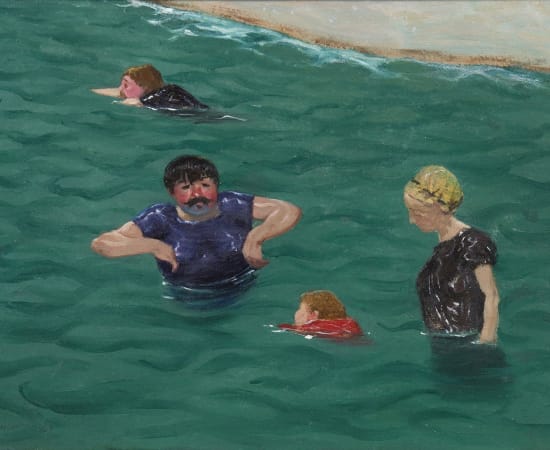Félix Vallotton (1865-1925) French, Swiss
Works
Biography
Master of Contrast, Innovator of Modern Woodcut, and Key Figure of Les Nabis
At Bailly Gallery, we celebrate the artists who combined technical mastery with innovative vision, and Félix Vallotton exemplifies this synthesis as one of the most compelling voices in Post-Impressionism. A painter, printmaker, and illustrator, Vallotton is especially renowned for his pioneering woodcuts and psychologically charged compositions, which have secured his place among the great modernists of the late 19th and early 20th centuries.
Born in Lausanne, Switzerland, in 1865, Vallotton moved to Paris in 1882 to study at the Académie Julian, quickly becoming associated with the avant-garde group known as Les Nabis. Influenced by Symbolism and Japanese prints, Vallotton’s style evolved to emphasize bold graphic contrasts, flat planes of color, and precise, almost theatrical compositions.
His innovative woodcuts revolutionized printmaking with their striking black-and-white interplay, sharp lines, and narrative intensity. Vallotton’s prints often explore themes of domestic life, social satire, and existential tension, revealing a keen psychological insight into human behavior.
In painting, Vallotton combined the decorative and the narrative, blending everyday scenes with symbolic undertones. His use of color and composition was meticulous yet emotionally potent, reflecting his unique position between tradition and modernity.
Vallotton’s work is represented in major collections worldwide, including the Musée d’Orsay, the Tate Modern, and the Museum of Modern Art (MoMA). His influence extends beyond his era, impacting modern graphic arts and narrative painting.
At Bailly Gallery, we proudly present Félix Vallotton as an artist whose sharp contrasts and subtle narratives continue to captivate collectors and connoisseurs. His legacy as both a painter and printmaker embodies the spirit of innovation and emotional depth that defines modern art.
At Bailly Gallery, we celebrate the artists who combined technical mastery with innovative vision, and Félix Vallotton exemplifies this synthesis as one of the most compelling voices in Post-Impressionism. A painter, printmaker, and illustrator, Vallotton is especially renowned for his pioneering woodcuts and psychologically charged compositions, which have secured his place among the great modernists of the late 19th and early 20th centuries.
Born in Lausanne, Switzerland, in 1865, Vallotton moved to Paris in 1882 to study at the Académie Julian, quickly becoming associated with the avant-garde group known as Les Nabis. Influenced by Symbolism and Japanese prints, Vallotton’s style evolved to emphasize bold graphic contrasts, flat planes of color, and precise, almost theatrical compositions.
His innovative woodcuts revolutionized printmaking with their striking black-and-white interplay, sharp lines, and narrative intensity. Vallotton’s prints often explore themes of domestic life, social satire, and existential tension, revealing a keen psychological insight into human behavior.
In painting, Vallotton combined the decorative and the narrative, blending everyday scenes with symbolic undertones. His use of color and composition was meticulous yet emotionally potent, reflecting his unique position between tradition and modernity.
Vallotton’s work is represented in major collections worldwide, including the Musée d’Orsay, the Tate Modern, and the Museum of Modern Art (MoMA). His influence extends beyond his era, impacting modern graphic arts and narrative painting.
At Bailly Gallery, we proudly present Félix Vallotton as an artist whose sharp contrasts and subtle narratives continue to captivate collectors and connoisseurs. His legacy as both a painter and printmaker embodies the spirit of innovation and emotional depth that defines modern art.
Enquire



